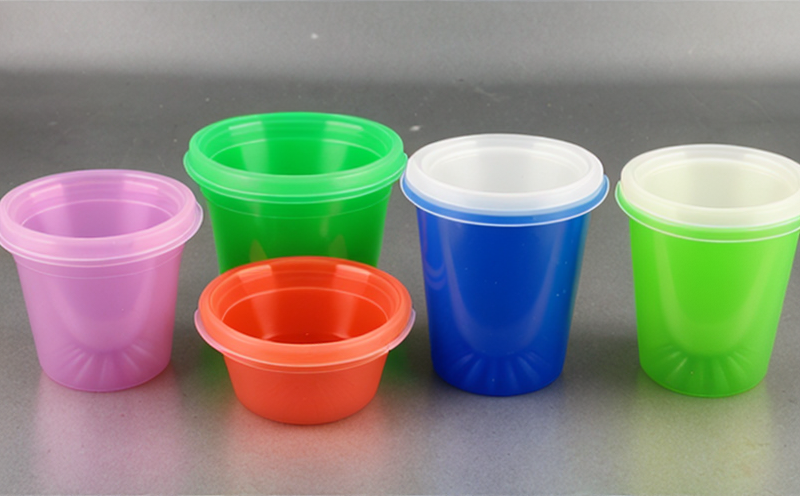EN 14482 Heavy Metals Testing of Disposable Plastics
The European standard EN 14482:2003 specifies the method for determining the content of heavy metals in disposable plastics. This testing is crucial to ensure that products meet stringent environmental and health safety regulations, particularly in sectors like healthcare, food packaging, and consumer goods.
Heavy metal contamination can lead to significant health risks if ingested or absorbed through skin contact. Therefore, compliance with EN 14482 ensures the safety of end-users by minimizing exposure to harmful elements such as lead (Pb), cadmium (Cd), chromium (Cr), and others that may be present in disposable plastics.
The testing process involves several critical steps to ensure accurate results:
- Sample preparation: This includes washing the samples to remove surface contaminants, ensuring they are free from any external factors that could skew the test results.
- Extraction: Heavy metals are extracted using appropriate solvents and techniques that do not alter the metal content. The choice of solvent depends on the type of plastic being tested.
- Detection and quantification: Once extracted, the heavy metals are detected using atomic absorption spectroscopy (AAS) or inductively coupled plasma mass spectrometry (ICP-MS). These methods provide precise measurements that adhere to the precision requirements specified by EN 14482.
The standard also provides a comprehensive list of substances and their maximum permissible concentrations. For instance, the limit for lead in disposable plastics is set at 0.5 mg/kg (ISO 6872:2013).
Our laboratory adheres strictly to this standard, using state-of-the-art instrumentation to ensure reliable results that are accurate and repeatable.
| Heavy Metal | Maximum Permissible Concentration (mg/kg) |
|---|---|
| Cadmium (Cd) | 10 |
| Cobalt (Co) | 300 |
| Copper (Cu) | 5,000 |
| Lead (Pb) | 5 |
| Manganese (Mn) | 1,000 |
| Mercury (Hg) | 1 |
| Zinc (Zn) | 2,500 |
The test results are reported in a clear and concise manner that includes all relevant data points along with the interpretation of these values within the context of regulatory compliance.
- Precision: Results must be consistently reproducible from one test to another.
- Accuracy: The method should produce accurate measurements that reflect the true metal content without any significant bias.
This testing is essential for manufacturers looking to ensure their products meet both national and international standards, thereby protecting public health and the environment.
Industry Applications
The application of heavy metals testing in disposable plastics spans various industries where safety and environmental considerations are paramount:
- Healthcare: Medical devices, syringes, and other single-use equipment.
- Food Packaging: Food containers, lids, and wraps used for food products.
- Consumer Goods: Disposable items like razors, toothbrushes, and cleaning supplies.
The results of these tests are crucial in ensuring that the products do not contain harmful levels of heavy metals, thereby safeguarding public health and compliance with regulatory standards.
Customer Impact and Satisfaction
Our comprehensive testing services have positively impacted our customers by:
- Ensuring product safety and reliability.
- Facilitating compliance with international regulations.
- Providing clear, accurate data that supports informed decision-making.
We pride ourselves on delivering exceptional service, which has earned us a high level of satisfaction from our clients. Our commitment to precision and integrity ensures that you can trust the results we provide.
International Acceptance and Recognition
The testing methods outlined in EN 14482 are widely recognized and accepted across Europe and other regions, including North America and Asia. Compliance with this standard is crucial for manufacturers who export their products or operate globally.
- Eurozone: Essential for all disposable plastic products sold within the EU.
- International: Widely accepted in countries that adhere to international standards like ISO and ASTM.
The acceptance of these tests by regulatory bodies ensures a high level of confidence in the safety and quality of the products being tested.





